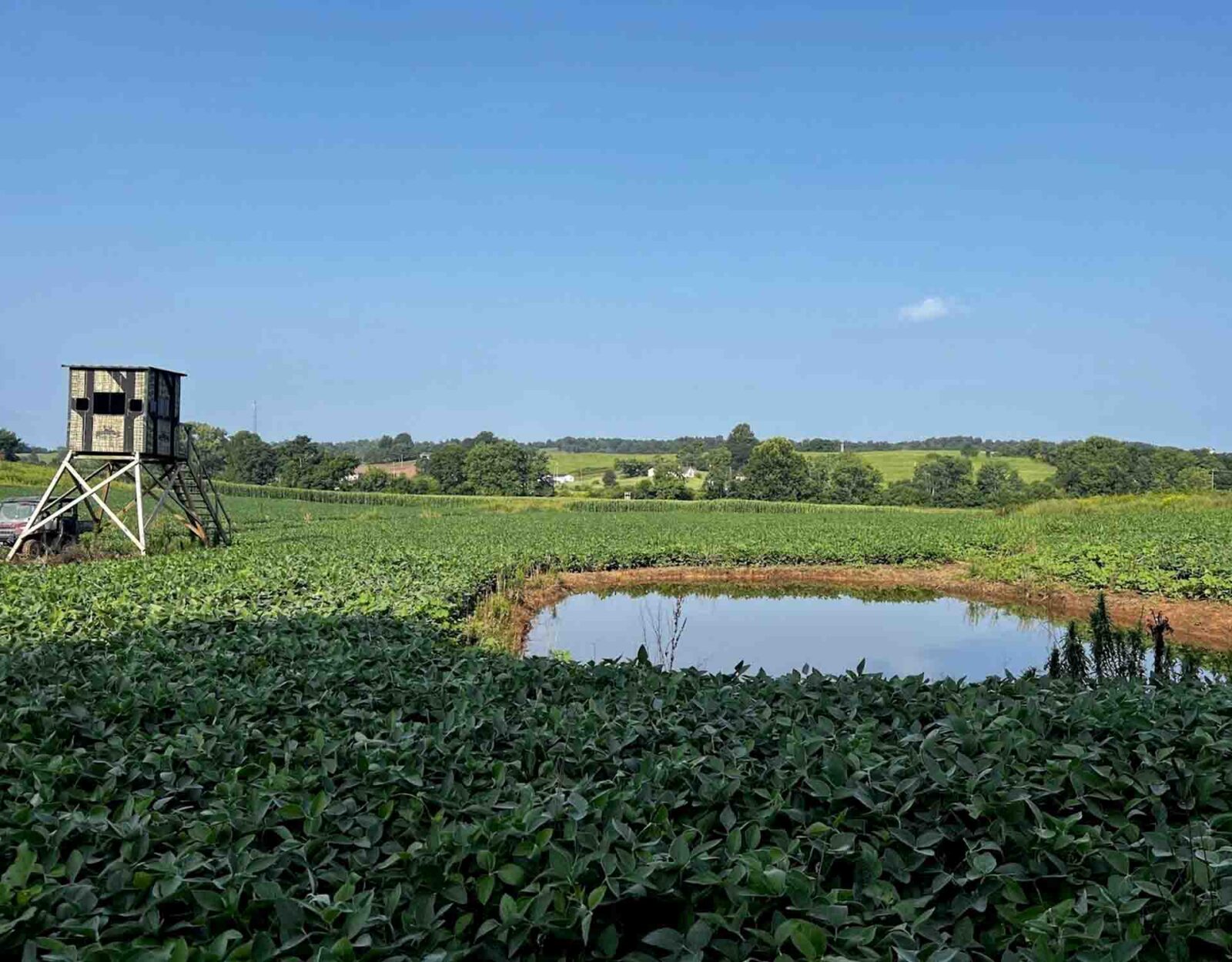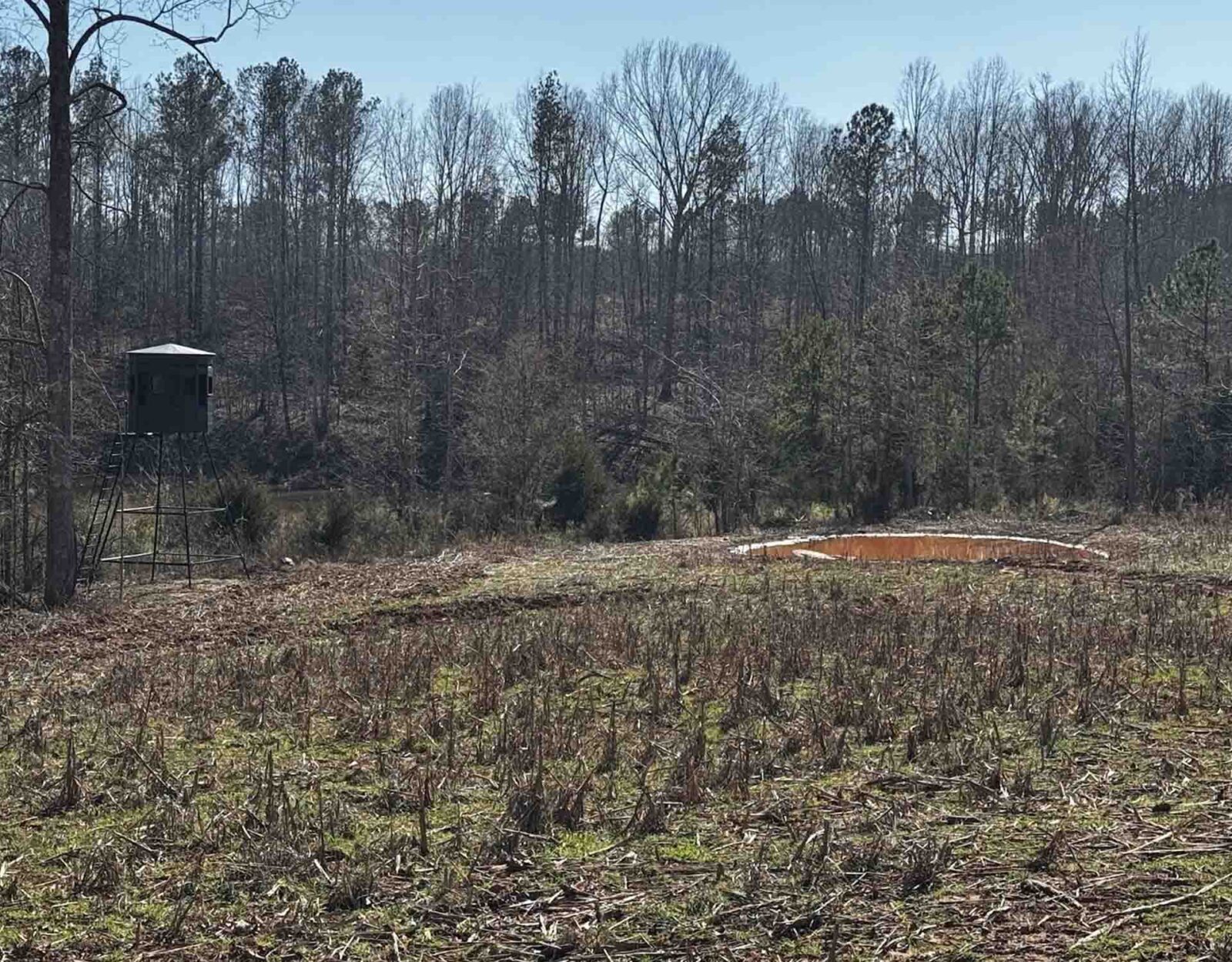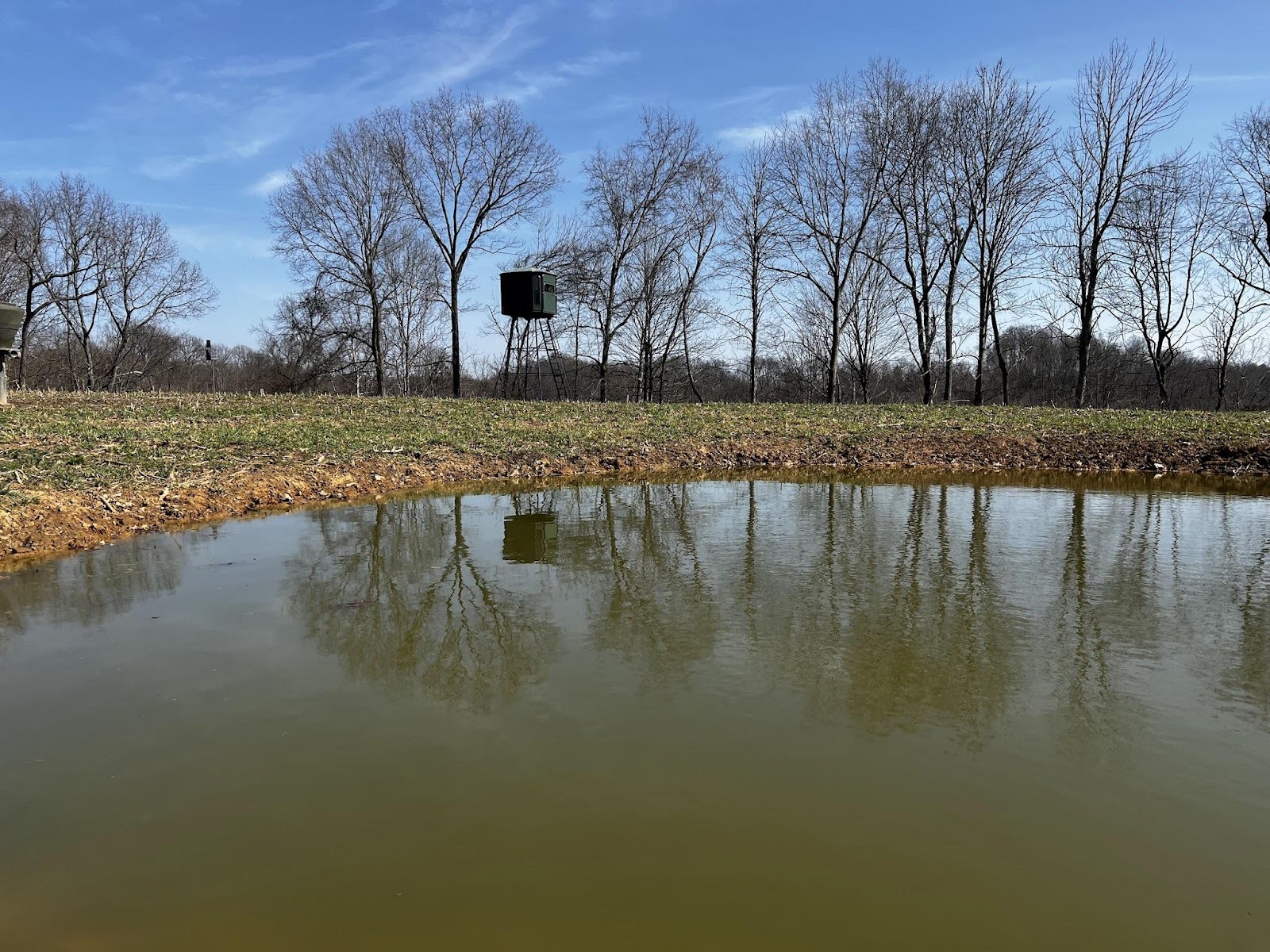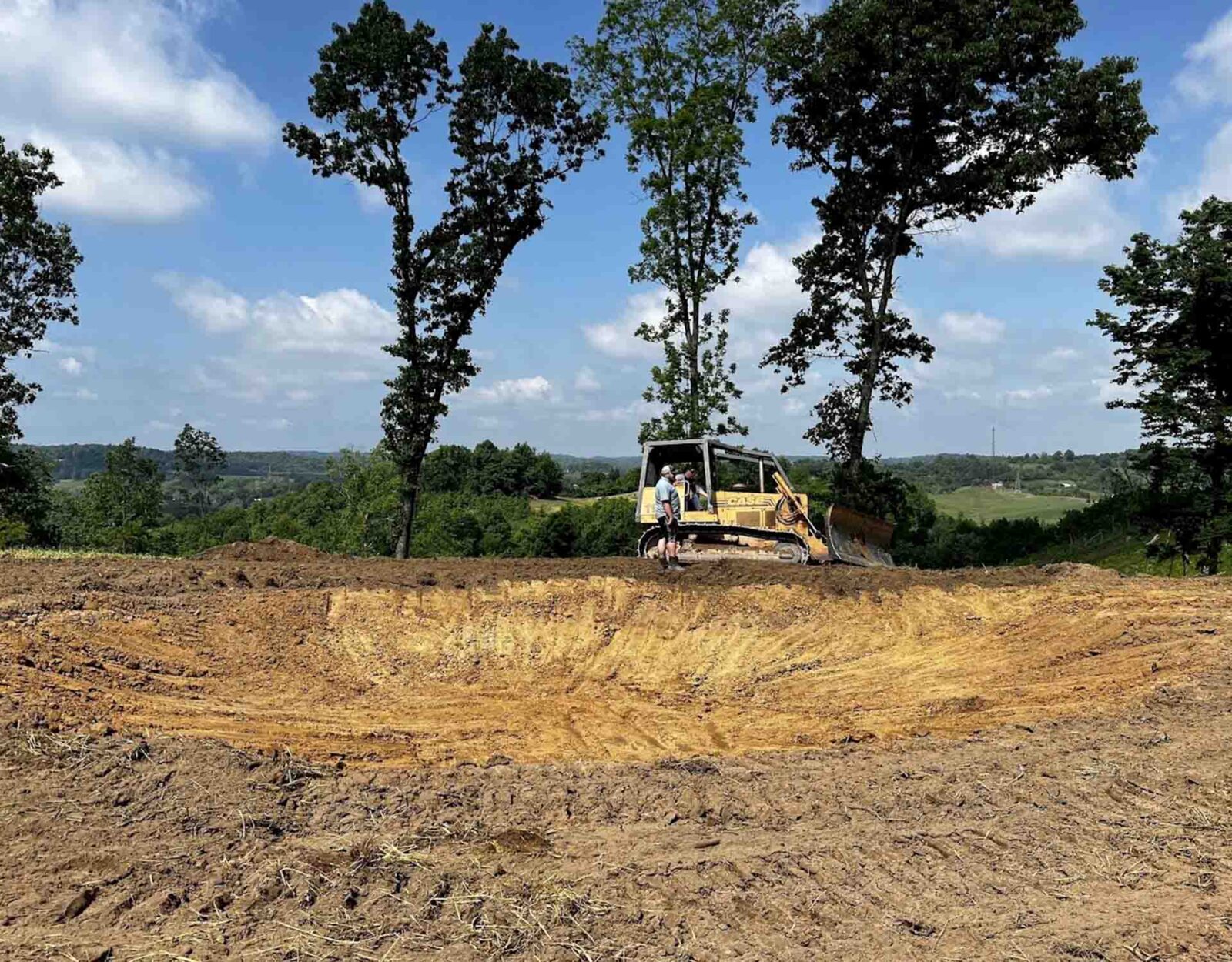Water is one of the three main features that must be present on a property (food and cover being the other two, of course). Water comes in many different forms, and wildlife consume their daily requirements differently. Understanding water and water consumption is more complex than simply locating puddles and streams.
Here, we’ll discuss deer water preferences and offer advice on making your own watering holes for deer.
Deer Water Preferences
When most people think of water forms, they think of free-standing water. Examples of free-standing water include ponds, streams, lakes, and puddles. Any surface water would be considered free-standing water. Surprisingly, free-standing water is the least common way whitetails meet their daily water requirements. Whitetails will resort to free-standing water in times of drought when vegetation lacks its typical water content or on warmer days during the rut when they are moving more than usual.
More commonly, deer meet their daily water requirements by consuming vegetation. This is called preformed water, and it accounts for 80% of a deer’s water intake. When deer digest vegetation, they separate water from their forage during the metabolic processes. As such, fresh and tender forage is just as much a water source as it is a food source. Increasing the amount of water on a property can be accomplished by increasing the amount of herbaceous vegetation within reach of whitetail deer.
So, if deer prefer preformed water, why bother with free-standing water like watering holes? Well, the big caveat to this equation is the position or location of free-standing water. Free-standing water is more commonly used if it is placed where deer are already frequenting. Don’t think in the general vicinity of a food plot, but specifically in a food plot, where the majority of deer are entering and exiting, or transitioning through the food plot. When you can get free-standing water right in a deer’s path, you’ll see usage dramatically increase.
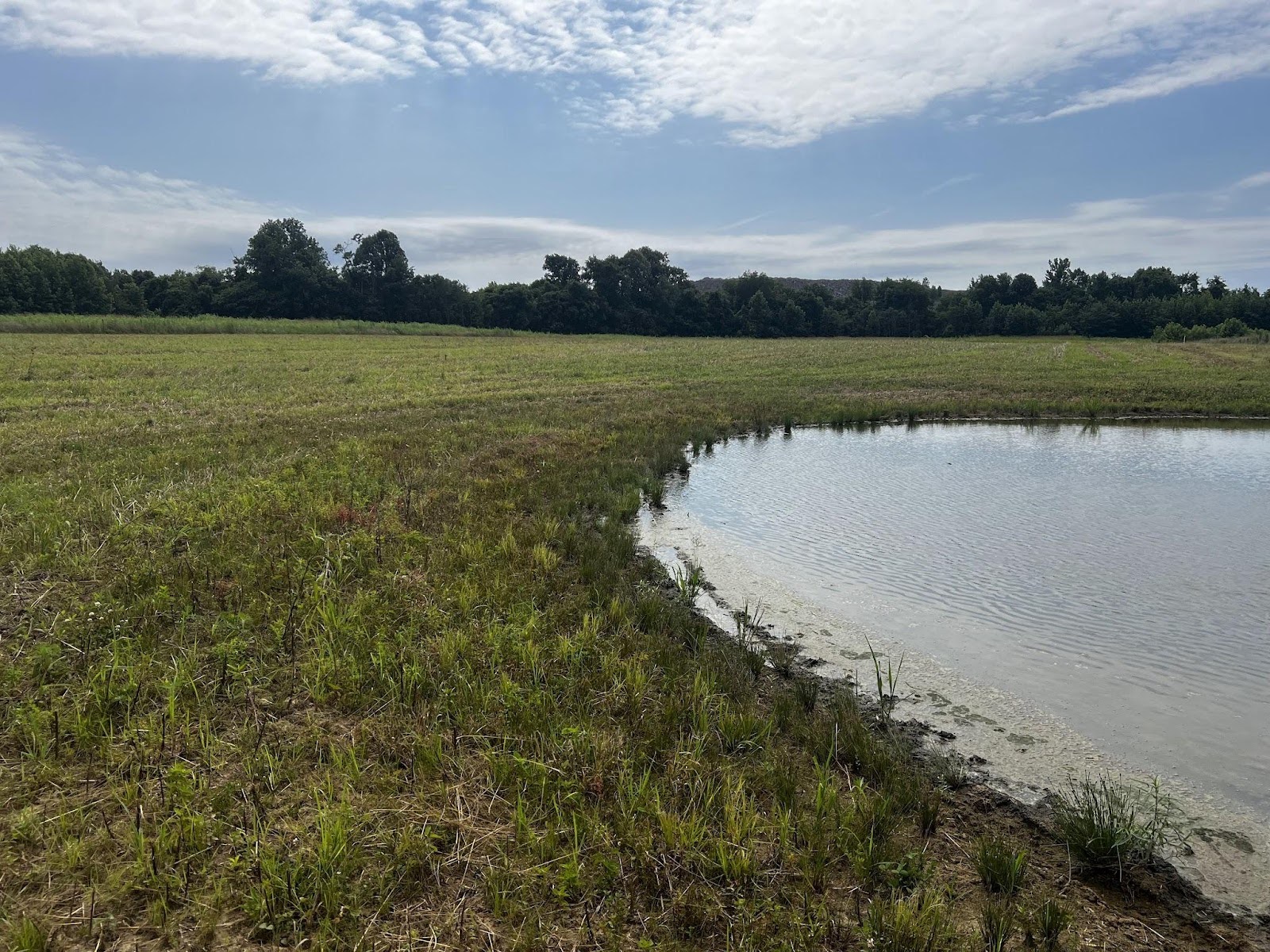
Types of Watering Holes for Deer
Water holes come in different shapes and sizes, and not all are created equal. Below, I outline the pros and cons of different ways to create watering holes.
Man-Made Product Watering Hole
Examples: Water trough, stock tank, kiddie pool.
Pros:
- Leak proof.
- Easier to move locations if needed.
Cons:
- Limited holding capacity.
- Non-target animal interference (mice, rodents fall in and contaminate the water — if going this route, remember to put a stick or other way for them to crawl out).
- Steep bank/wall.
- Often require refilling consistently.
- Unnatural and can require a learning curve for deer.
Wildlife Watering Hole
Example: A pond.
Pros:
- Self-refilling with proper construction.
- Varying size options.
- Supports natural plant communities.
- Graduated/sloping banks.
Cons:
- Often requires larger equipment to implement.
- Potential for leaks.
- Immovable
Often, the most limiting factor is time for landowners, hunters, and habitat managers. This is why I choose wildlife water holes/ponds over the man-made tanks for the size and consistent maintenance required to keep them filled and clean. You want enough water in them to provide a free-standing water source during times of drought, with little to no additional work in areas you plan to hunt consistently.
To address one of the main cons of wildlife watering holes (the potential for leaks), we use and recommend a product called Dam IT. This product will seal the bottom of the pond and help address cracks that occur once the pond is filled. For the investment of a well-placed watering hole, it’s well worth ensuring it will hold water, especially if clay is hard to find in your soils.
Are there circumstances that make a watering hole especially beneficial?
If you live in an area that receives fewer than 25 inches of annual rainfall, a watering hole is an incredibly important feature to add to your property. In these regions, consistent water sources can be more valuable than a 3+/- acre food plot. Yes, they are that important — don’t overlook the need for consistent water. With such small amounts of rainfall throughout an entire year, digging a solar well can be worth the expense. Often, these areas also have low humidity levels, so evaporation is a big issue. Digging a solar well that consistently feeds the water hole can be well worth the additional expense.
Where To Place a Deer Watering Hole
Placement is everything for watering holes. If deer are frequenting certain locations, you want to be able to hunt those locations effectively. Therefore, beyond assuming that the access, winds, and thermals already work, the water hole should be placed 20-30 yards from a blind or treestand. In addition, watering holes should be placed in a lower-lying area where minimal grading is needed to allow more water to flow into the water hole (i.e. try to find a place that allows for natural recharge). When possible, we recommend steering deer to these locations with edge feathering around a food plot to produce broadside shooting opportunities from the hunting location.
Place your watering hole within comfortable shooting distance of your blind or tree stand, when possible. See above for three placement examples.
Naturally, most watering holes find themselves in and around food sources where a hunter is already congregating deer activity. Water holes in close proximity to a blind or stand location help make a large food plot hunt small. Hunting 3+ acres of food with a bow can be tough; however, deer may commonly cross the entire width of food plots to access the watering hole.
Another favorite spot to place a watering hole is saddles in ridges where deer frequently cross or other pinches in timber/transitional areas. During the rut, pinches are commonly used, and with a water source, the quick-moving bucks will slow down to drink. In hot or cold weather, an open, unfrozen water source placed in a convenient location will be a hot spot during the rut.

Pond Size
The typical size of wildlife watering holes is 15×15 feet wide and approximately 3-3.5 feet deep. It’s critical that these ponds have slightly graded slopes in and out of the pond. Deer will not use the pond frequently if the banks are so steep that they have to be nearly inverted to drink. From a predation standpoint, steep banks put them in an incredibly vulnerable position, head down, below the banks of the pond, and the weight ratio is off, making it difficult to quickly evade a predator. See photo below for a great example of slightly graded banks for easy in and out for whitetail deer.
When excavating your pond, take care to create a gently sloped bank, as shown above.
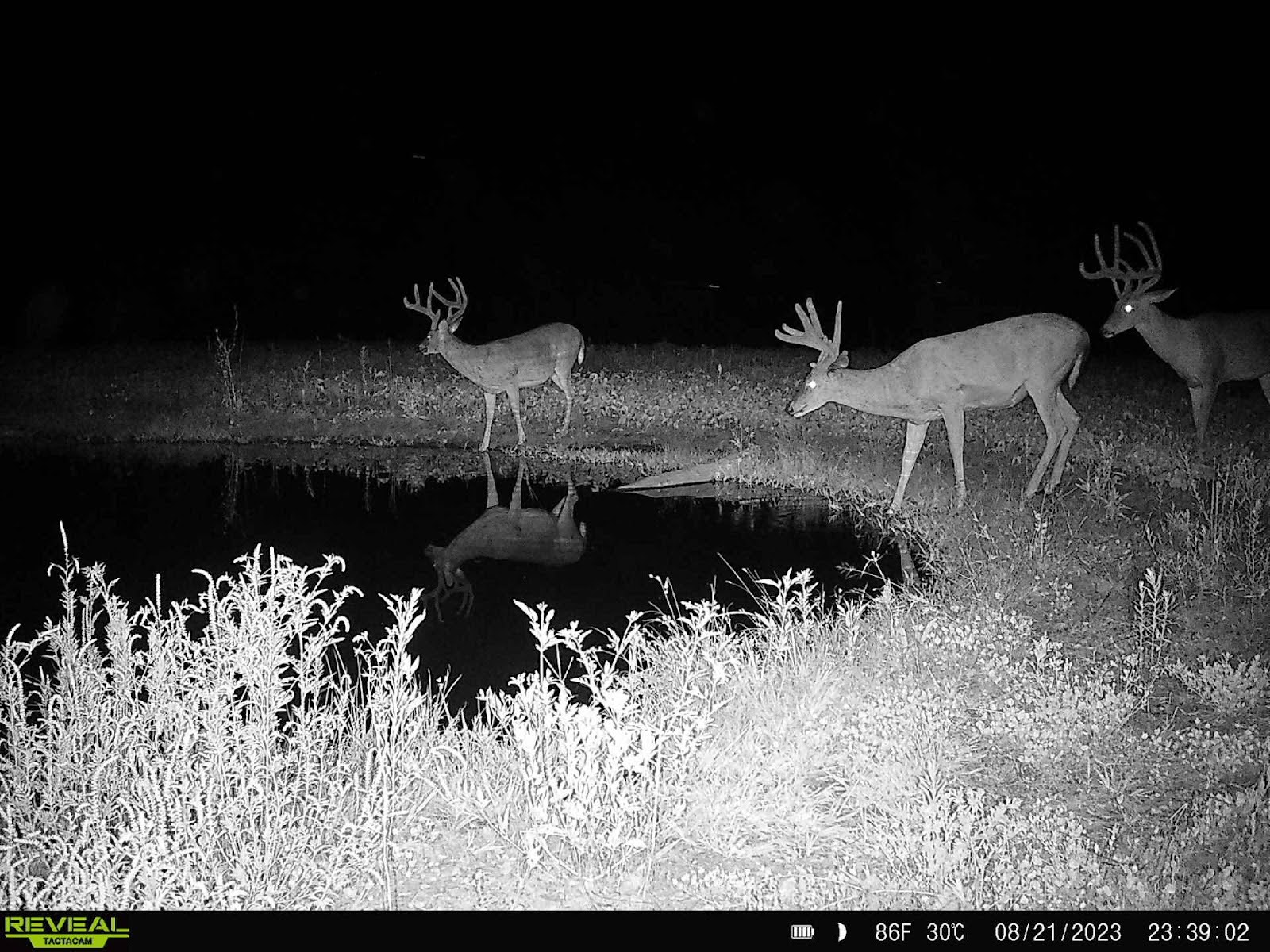
How Many Water Sources Should You Create?
Often, people want to know how many watering holes to place on a given property. It certainly does depend, and there is no magic number or acre-to-water hole ratio. If you have a killer hunting setup that deer frequent, I’d consider adding a water hole to it. Think of it like this: deer should only hit one water source in the most killable location as they travel from food to bed or bed to food. So keep that in mind; watering holes will be less effective or less frequently used if there are multiple water hole options located along the travel corridor from secure bedding to a food source.
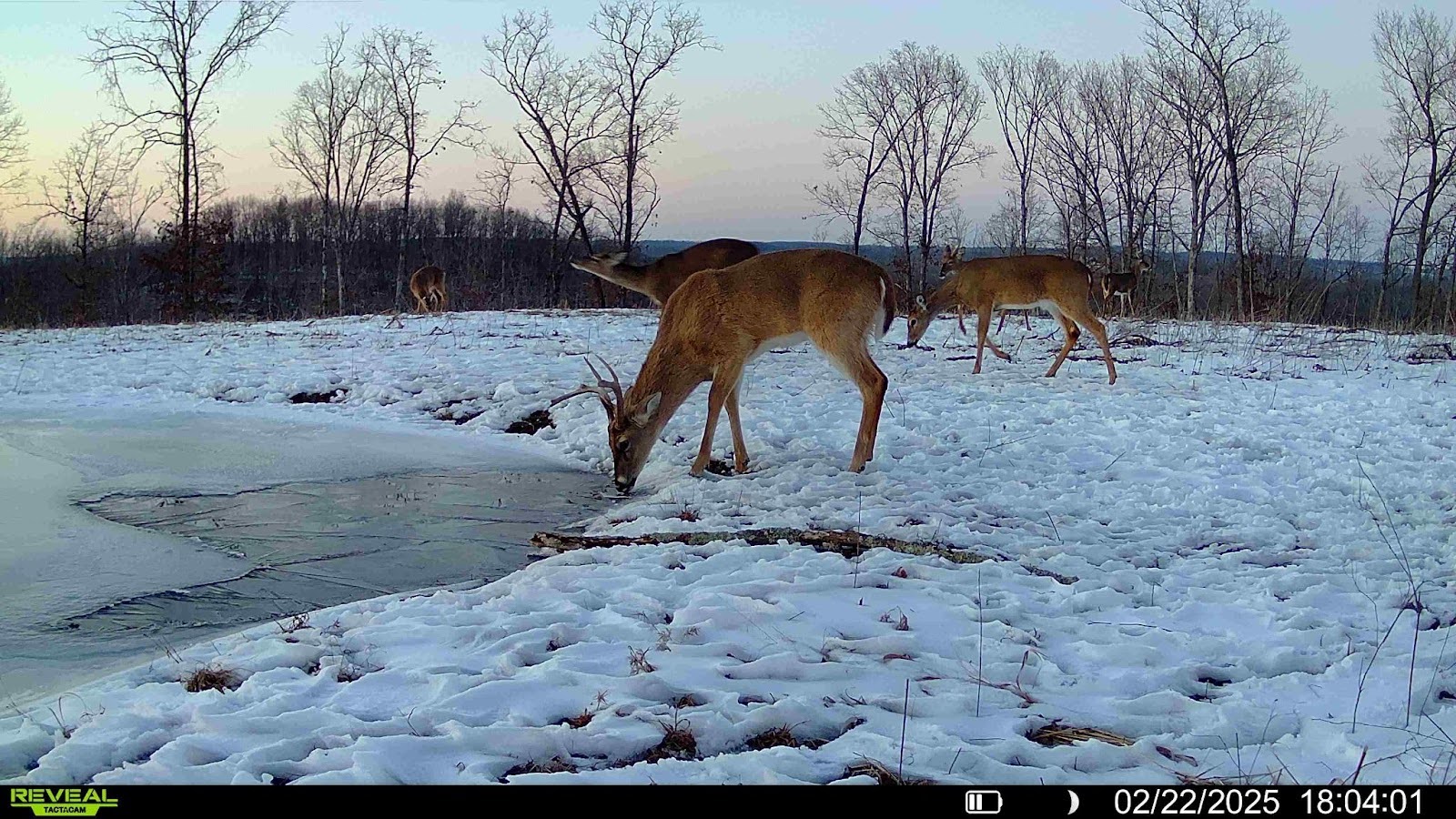

Keeping watering holes open in the winter
We’re experimenting with keeping watering holes open during the coldest months of the year with solar aerators. When deer are using a lot of energy and food sources have little moisture during the winter, open water sources are heavily used, especially if they are close to late season food. We’ve found that keeping these holes from freezing over is a great late season bowhunting strategy.
Using onX Hunt To Plan Your Watering Setup
Waypoints: When I have identified a great location for a watering hole, I will use the water source Waypoint and color it blue to place the wildlife water hole in a given location. The size will vary based on the grade of a given area, however, 15 x 15 ft. to 25 x 25 ft. is a great goal for a water hole.
The Area Shape feature will also help provide you with accurate measurements of the watering hole when you are in the planning stages.
I’ve found when laying out these watering holes that I never have a rangefinder handy; therefore, the Rangefinder feature within the Hunt App allows me to precisely place the water hole within 20 to 30 yards from the blind or tree that has been selected. All the tools necessary to make the placement of a water hole in the exact right location can be found within the app.
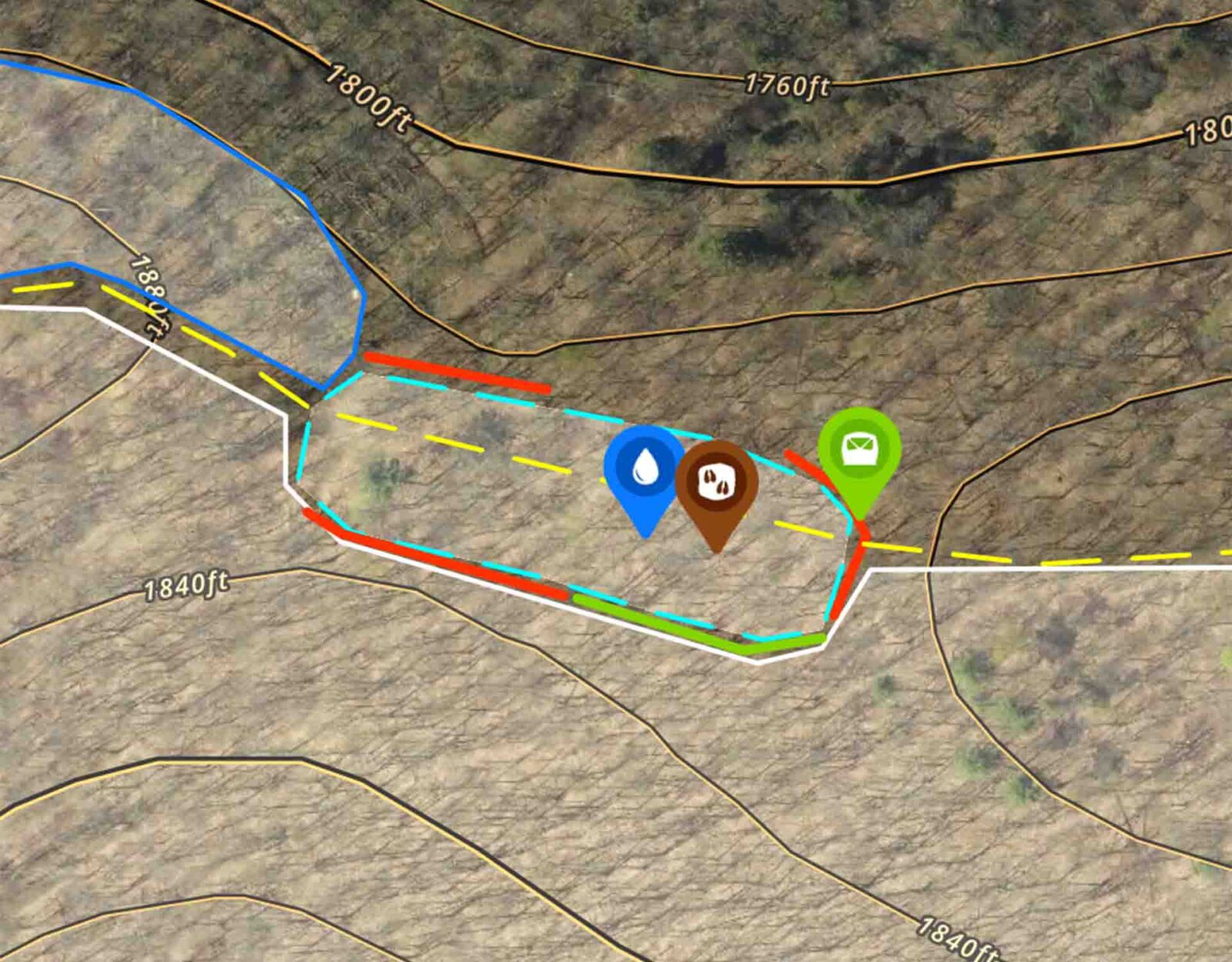
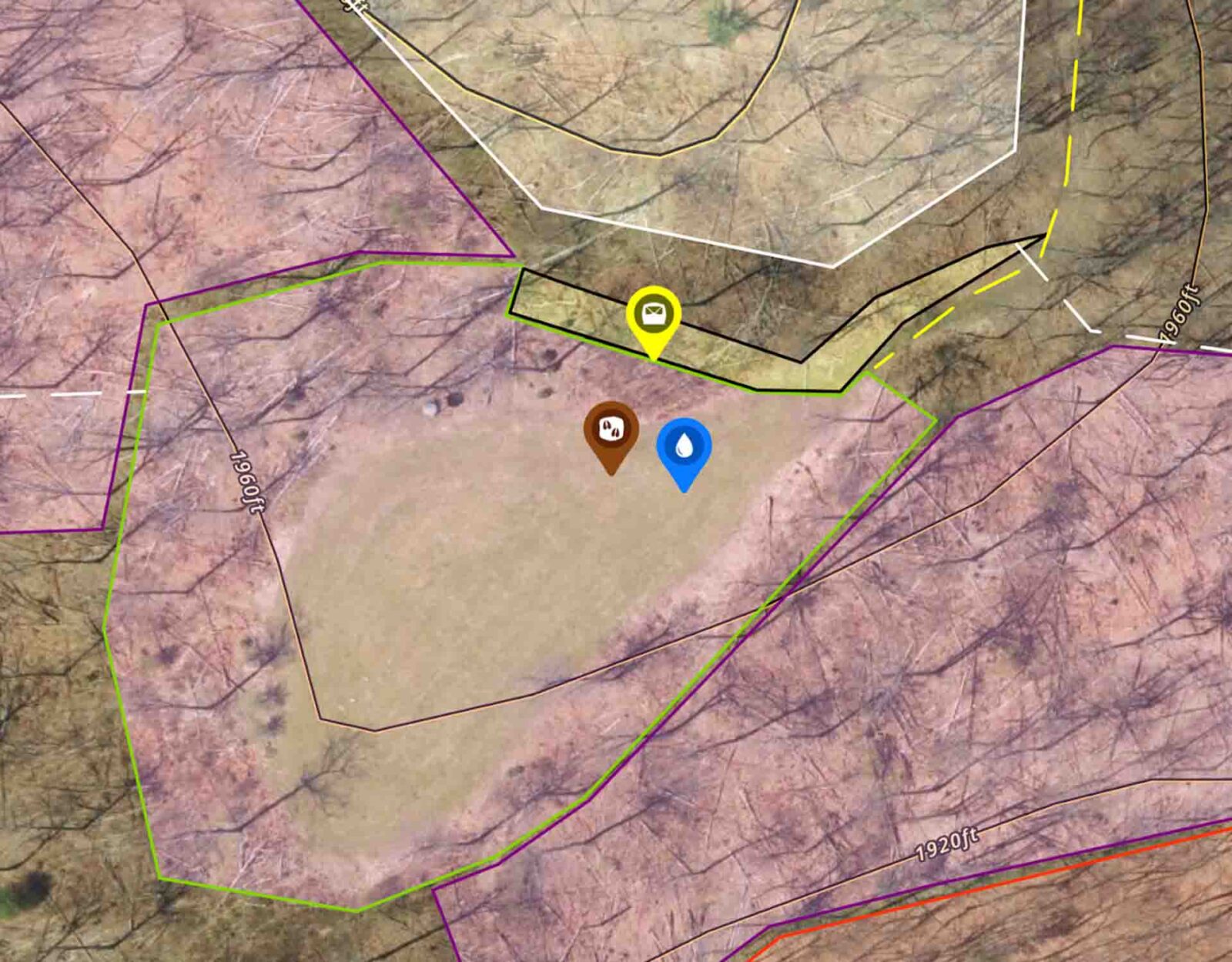
Wildlife watering holes can be overlooked, as most hunters don’t ever see deer drinking from free-standing water sources. But, perhaps those water sources are just poorly located or accessible. To elevate your setup, timber, or food plot, consider adding a watering hole to a location that deer are already frequently passing through, and your mind will be blown. Don’t forget to add a trail camera as well — you don’t want to miss out on the consistency these features can provide.
